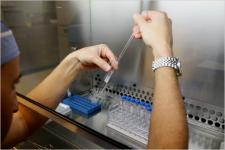Eggs and sperm can now be stored for up to 55 years – here’s what that means for donors and people seeking fertility treatment
By Caroline A. B. Redhead, Jackson Kirkman-Brown, Leah Gilman, Lucy Frith,
The Conversation
| 07. 04. 2022
The UK government has just extended the period that gametes (eggs and sperm) and embryos can be stored from ten years to 55 years. While this change will probably be welcomed by people who wish to have fertility treatment, it could have important implications for egg and sperm donors.
A growing number of people in the UK are choosing to freeze their eggs, sperm and embryos for use in their own fertility treatment. Previously, the storage limit was ten years – though extensions were permitted for people who could prove a medical need (such as premature infertility) up to 55 years.
But many felt that the storage limits restricted the choices of people who freeze eggs and sperm for their own fertility treatment. If they couldn’t give a medical reason to increase the storage period, these gametes had to be destroyed after ten years.
Cryopreservation techniques – which involve freezing gametes to preserve them – have also improved significantly since the previous storage limits were set. Studies now show that eggs frozen using current preservation techniques are likely to...
Related Articles
By Aisha Down, The Guardian | 11.10.2025
It has been an excellent year for neurotech, if you ignore the people funding it. In August, a tiny brain implant successfully decoded the inner speech of paralysis patients. In October, an eye implant restored sight to patients who had...
By Jessica Hamzelou, MIT Technology Review | 11.07.2025
This week, we heard that Tom Brady had his dog cloned. The former quarterback revealed that his Junie is actually a clone of Lua, a pit bull mix that died in 2023.
Brady’s announcement follows those of celebrities like Paris...
By Heidi Ledford, Nature | 10.31.2025
Late last year, dozens of researchers spanning thousands of miles banded together in a race to save one baby boy’s life. The result was a world first: a cutting-edge gene-editing therapy fashioned for a single person, and produced in...
By Lauran Neergaard, AP News | 11.03.2025
WASHINGTON (AP) — The first clinical trial is getting underway to see if transplanting pig kidneys into people might really save lives.
United Therapeutics, a producer of gene-edited pig kidneys, announced Monday that the study’s initial transplant was performed successfully...




